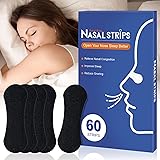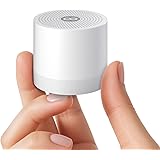A staggering 79% of individuals who experience Autonomous Sensory Meridian Response (ASMR) report using it specifically to help them sleep, with 86% leveraging it for general relaxation. If you’ve just watched the video above, you might have felt a gentle pull towards a state of calm, a unique sensation designed to quiet the mind and prepare for rest. The playful challenge of “don’t close your eyes” ultimately transitions into an invitation to surrender to sleep, highlighting the powerful, almost hypnotic potential of visual and auditory cues.
Understanding ASMR for Sleep and Relaxation
The concept of ASMR, or Autonomous Sensory Meridian Response, describes a tingling sensation, typically starting on the scalp and moving down the back of the neck and upper spine. It’s often triggered by specific auditory or visual stimuli, and for many, it’s a profound experience of deep relaxation and mental peace. This isn’t just a fleeting trend; it’s a phenomenon that has garnered significant attention for its potential therapeutic benefits, especially when it comes to combating stress and aiding sleep.
What Exactly is ASMR? The Science Behind the Tingles
While research into ASMR is still evolving, neuroscientific studies suggest that the experience involves activation in brain regions associated with reward, emotion, and self-awareness. When you experience ASMR, your parasympathetic nervous system, responsible for “rest and digest” functions, becomes more active. This leads to a decrease in heart rate, blood pressure, and muscle tension, creating a physiological state conducive to sleep.
Imagine a long day, filled with deadlines and constant mental chatter. Your brain is buzzing, making it impossible to unwind. Now, picture yourself listening to a gentle whispering voice or watching a repetitive, calming visual, like the subtle light in the video. These sensory inputs act as a kind of mental reset button, diverting your focus from intrusive thoughts and guiding your brain into a more relaxed alpha wave state, which precedes sleep.
The Power of Visual Triggers in Relaxing ASMR Experiences
While many associate ASMR primarily with sounds – whispers, tapping, crinkling – visual triggers play an equally significant role for a large segment of the ASMR community. The video you just watched is a prime example of how visual cues, specifically the deliberate use of light, can guide your focus and promote relaxation. The shifting light, the gentle movements, and the focused attention demanded by the presenter all contribute to a sensory experience that encourages mental unwinding.
These visual elements often work by providing a structured, predictable stimulus that allows your mind to disengage from its usual anxieties. Instead of fixating on worries, your attention is gently drawn to the visual patterns, leading to a meditative state. For those seeking sleep induction, this can be incredibly effective. Imagine if, instead of tossing and turning, your eyes could follow a soft, mesmerizing pattern, allowing your thoughts to drift away naturally, much like the process depicted in the video.
Beyond the Light: Exploring Different ASMR Triggers for Sleep Induction
The world of ASMR is vast, offering a myriad of triggers to explore in your quest for better sleep quality. While visual ASMR, as demonstrated in the video, can be incredibly potent, combining it with other types can enhance the overall calming effects:
- Auditory Triggers: Whispering, soft speaking, tapping sounds, crinkling, page turning, brushing sounds, and even specific mouth sounds. These can create a soundscape that envelops you in tranquility.
- Tactile Triggers: Although not directly experienced through a screen, visual representations of tactile actions like brushing hair, gentle touching, or kneading dough can evoke a sympathetic response, producing tingles and relaxation.
- Role-playing Scenarios: Many ASMR creators adopt personas like doctors, hairdressers, or librarians, guiding viewers through calming scenarios designed to foster a sense of care and safety, which is excellent for stress relief.
- Personal Attention: Videos where the creator speaks directly to the camera, often with soft eye contact and gentle hand movements, can create a feeling of personal connection and comfort, which many find profoundly relaxing.
Experimenting with different triggers is key to finding what resonates most with you. Some individuals may respond strongly to specific visual patterns, while others might find solace in particular sound combinations. The goal is always the same: to activate that soothing “tingle” sensation and guide your mind towards a state of restful peace.
Integrating ASMR into Your Bedtime Routine for Deeper Sleep
Leveraging ASMR for sleep induction isn’t about simply watching a video and hoping for the best. It’s about consciously incorporating these relaxation techniques into a structured bedtime routine. Just as the video gently guides you from alertness to surrender, you can design your evenings to transition smoothly into a restful state.
Consider the following steps to maximize the benefits of relaxing ASMR:
- Set the Scene: Create a calming environment. Dim the lights, ensure your room is cool, and minimize distractions. This primes your brain for relaxation even before you start your ASMR session.
- Choose Your Trigger Wisely: Select an ASMR video or audio track that you know reliably triggers your response. If you’re new to ASMR, start with popular categories like whispers, soft tapping, or visual light play, similar to what you observed in the video.
- Use Headphones: For auditory ASMR, high-quality headphones are often essential to fully immerse yourself in the subtle sounds and enhance the binaural experience.
- Limit Screen Time (Initially): While ASMR videos are screen-based, aim to limit other stimulating screen activities (social media, intense shows) at least an hour before bed. Your ASMR session should be the calming exception.
- Mindful Engagement: Instead of passively watching, actively engage with the ASMR content. Focus on the sensations, the sounds, and the visuals. Allow your mind to drift and accept the gentle pull towards sleep, much like surrendering to the “I think you won” message in the video.
- Consistency is Key: Incorporate ASMR into your routine nightly, even if you don’t feel immediate effects. Over time, your brain will begin to associate these stimuli with winding down, strengthening the neural pathways for relaxation and deep sleep.
Many people find that listening to ASMR content helps silence the inner monologue, reduces anxiety, and shifts their focus away from daily stressors. It provides a non-pharmacological pathway to a more relaxed state, making it easier to drift into a peaceful slumber. Embracing these simple, yet powerful, techniques can significantly improve your mental well-being and overall sleep quality by providing reliable sleep induction.
Whispering Answers: Your ASMR Visual Sleep Questions
What exactly is ASMR?
ASMR, or Autonomous Sensory Meridian Response, describes a tingling sensation that typically starts on the scalp and moves down the neck and spine. It’s often triggered by specific sights or sounds and leads to feelings of deep relaxation.
Why do people use ASMR for sleep and relaxation?
Many people use ASMR to help them sleep better and for general relaxation. The calming sensations and focused stimuli can help quiet the mind and reduce stress, making it easier to unwind.
How does ASMR help your body relax for sleep?
When you experience ASMR, your body’s ‘rest and digest’ system becomes more active, which can lower your heart rate and muscle tension. This shifts your brain into a more relaxed state, making it easier to fall asleep.
What kinds of things can trigger an ASMR response?
ASMR can be triggered by many things, including gentle sounds like whispering or tapping, visual cues like soft light movements, or even role-playing scenarios and personal attention. Many people find different triggers work best for them.








